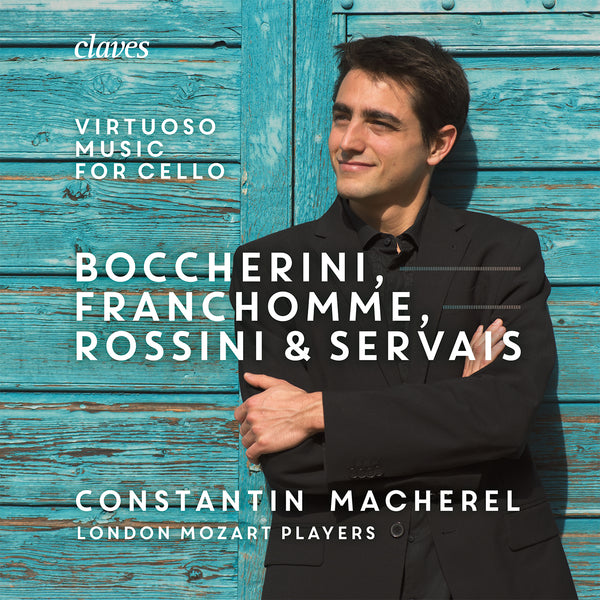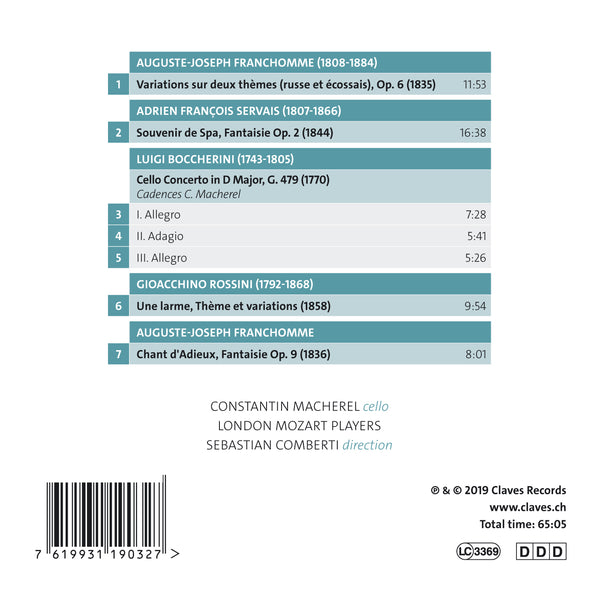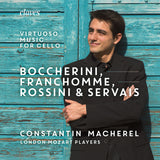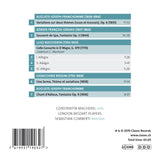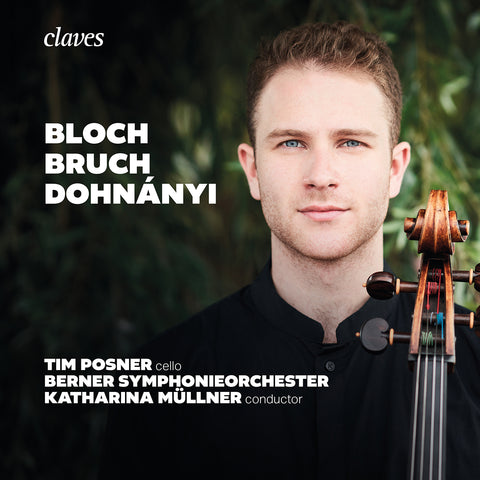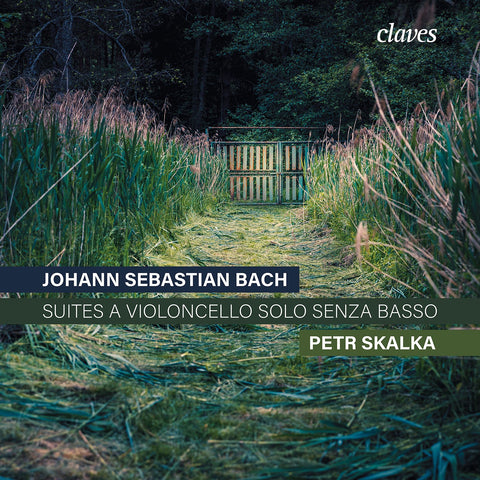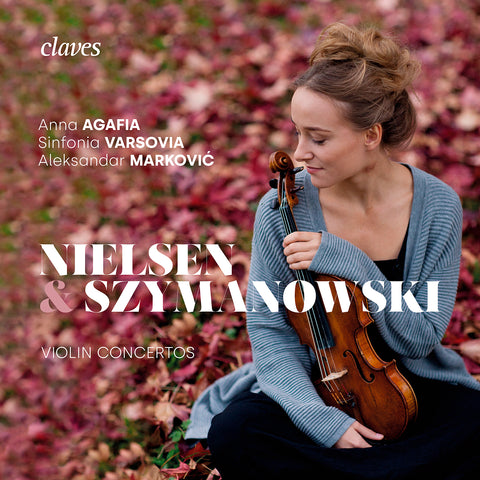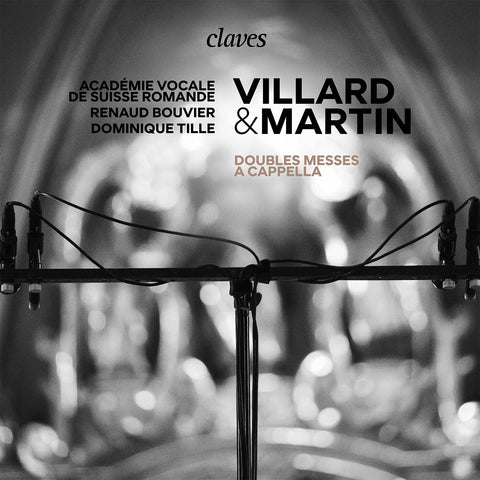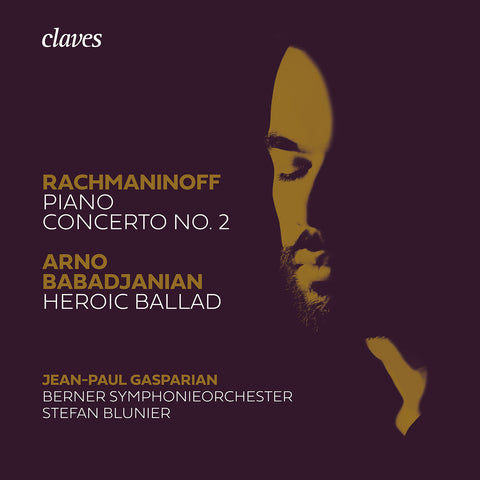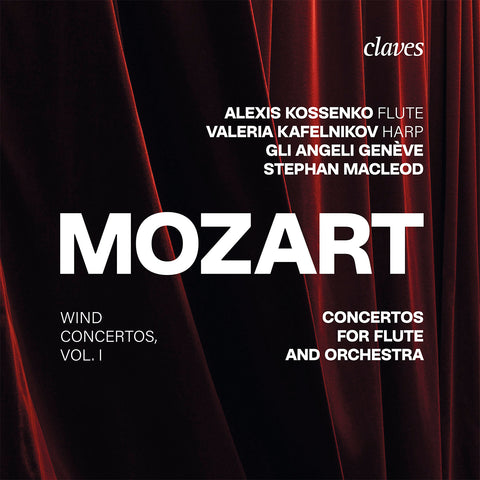(2019) Boccherini, Franchomme Rossini & Servais: Virtuoso Music for cello and strings
Catégorie(s): Concerto Orchestral Raretés
Instrument(s): Violoncelle Violon
Compositeur principal: Luigi Boccherini
Orchestre: London Mozart Players
Chef: Sebastian Comberti
Nb CD(s): 1
N° de catalogue:
CD 1903
Sortie: 20.09.2019
EAN/UPC: 7619931190327
Cet album est en repressage. Précommandez-le dès maintenant à un prix spécial.
CHF 18.50
Cet album n'est plus disponible en CD.
Cet album n'est pas encore sorti. Précommandez-le dès maintenant.
CHF 18.50
Cet album n'est plus disponible en CD.
CHF 18.50
TVA incluse pour la Suisse et l'UE
Frais de port offerts
Cet album n'est plus disponible en CD.
TVA incluse pour la Suisse et l'UE
Frais de port offerts
Cet album est en repressage. Précommandez-le dès maintenant à un prix spécial.
CHF 18.50
Cet album n'est plus disponible en CD.
This album has not been released yet.
Pre-order it at a special price now.
CHF 18.50
Cet album n'est plus disponible en CD.
CHF 18.50
Cet album n'est plus disponible en CD.
BOCCHERINI, FRANCHOMME ROSSINI & SERVAIS: VIRTUOSO MUSIC FOR CELLO AND STRINGS
Derived from the viole da braccio family rather than that of the viols, the cello gained its independence in the Cremona cradle of Italian instrument making between the 16th and early 18th century. It adopted the shape of a large violin – so large that it cannot rest on the shoulder like a violin or viola and is therefore held between the legs; an adjustable pin planted in the ground was added from the middle of the 19th century to make it more stable and easier to hold.
At the beginning, the cello suffered from the “competition” of other low-register string instruments, also held between the legs and played with a bow : the bass viol, very popular in aristocratic circles. The development of its technique throughout the 18th century, conveyed by ever more virtuoso musicians, was to bring about its “revenge”. Thanks to these ambassadors, more and more composers were indeed able to understand its fantastic expressive potential and decided to give it more than a shadow role as member of the continuo (next to the organ or harpsichord), to which it had been confined up until then. Vivaldi was among them, writing 27 concertos and 11 sonatas for it, Johann-Sebastian Bach, whose six Suites for Cello solo marked an apex in the exploitation of its polyphonic attributes, and then Boccherini, himself a cellist, who truly launched the instrument with his magnificent concertos.
The movement increased in the 19th century, with the disappearance of the viol competition, victim both of its “Old Regime” label and a lack of power in the face of the ever more ambitious expectations of Classical and especially Romantic composers. The latter gave the cello large-scale concertos and numerous scores of chamber music – sonatas, but also trios, quartets, quintets, in which it shines as brilliantly as its fellow instruments, such as in Schubert’s sublime Two Cello String Quintet. Scores that tend to agree with those who claim that the cello is the closest instrument to the human voice.
Read more in the booklet
***
Constantin Macherel, violoncelliste, compositeur, Pully
Nomade, 18.09.2019, 18h00
Nomade vous emmène à Pully à la rencontre du violoncelliste et compositeur Constantin Macherel. Après un beau parcours de formation auprès de grands professeurs, il entame sa carrière de soliste avec passion et talent. On le retrouve dans lʹéglise du Prieuré à Pully pour lʹécouter jouer quelques instants avant de parler avec lui de son premier CD consacré à Boccherini, Servais, Franchomme et Rossini et enregistré avec les prestigieux London Mozart Players.
Réalisation Bastien Moeckli
Derived from the viole da braccio family rather than that of the viols, the cello gained its independence in the Cremona cradle of Italian instrument making between the 16th and early 18th century. It adopted the shape of a large violin – so large that it cannot rest on the shoulder like a violin or viola and is therefore held between the legs; an adjustable pin planted in the ground was added from the middle of the 19th century to make it more stable and easier to hold.
At the beginning, the cello suffered from the “competition” of other low-register string instruments, also held between the legs and played with a bow : the bass viol, very popular in aristocratic circles. The development of its technique throughout the 18th century, conveyed by ever more virtuoso musicians, was to bring about its “revenge”. Thanks to these ambassadors, more and more composers were indeed able to understand its fantastic expressive potential and decided to give it more than a shadow role as member of the continuo (next to the organ or harpsichord), to which it had been confined up until then. Vivaldi was among them, writing 27 concertos and 11 sonatas for it, Johann-Sebastian Bach, whose six Suites for Cello solo marked an apex in the exploitation of its polyphonic attributes, and then Boccherini, himself a cellist, who truly launched the instrument with his magnificent concertos.
The movement increased in the 19th century, with the disappearance of the viol competition, victim both of its “Old Regime” label and a lack of power in the face of the ever more ambitious expectations of Classical and especially Romantic composers. The latter gave the cello large-scale concertos and numerous scores of chamber music – sonatas, but also trios, quartets, quintets, in which it shines as brilliantly as its fellow instruments, such as in Schubert’s sublime Two Cello String Quintet. Scores that tend to agree with those who claim that the cello is the closest instrument to the human voice.
Read more in the booklet
***
Constantin Macherel, violoncelliste, compositeur, Pully
Nomade, 18.09.2019, 18h00
Nomade vous emmène à Pully à la rencontre du violoncelliste et compositeur Constantin Macherel. Après un beau parcours de formation auprès de grands professeurs, il entame sa carrière de soliste avec passion et talent. On le retrouve dans lʹéglise du Prieuré à Pully pour lʹécouter jouer quelques instants avant de parler avec lui de son premier CD consacré à Boccherini, Servais, Franchomme et Rossini et enregistré avec les prestigieux London Mozart Players.
Réalisation Bastien Moeckli
Return to the album | Read the booklet | Composer(s): Luigi Boccherini | Main Artist: Constantin Macherel
STUDIO MASTER (AUDIO HAUTE-RÉSOLUTION)
Adrien François Servais
Amethys Design
Auguste-Joseph Franchomme
Concerto
Constantin Macherel - cello
Contre-ténor
En stock
Gioachino Rossini
London Mozart Players
Luigi Boccherini
Musique Haute-résolution - Qualité master studio
Orchestral
Raretés
Sebastian Comberti - cello
Tous les albums
Violon
Violoncelle
Adrien François Servais
Amethys Design
Auguste-Joseph Franchomme
Concerto
Constantin Macherel - cello
Contre-ténor
En stock
Gioachino Rossini
London Mozart Players
Luigi Boccherini
Musique Haute-résolution - Qualité master studio
Orchestral
Raretés
Sebastian Comberti - cello
Tous les albums
Violon
Violoncelle







